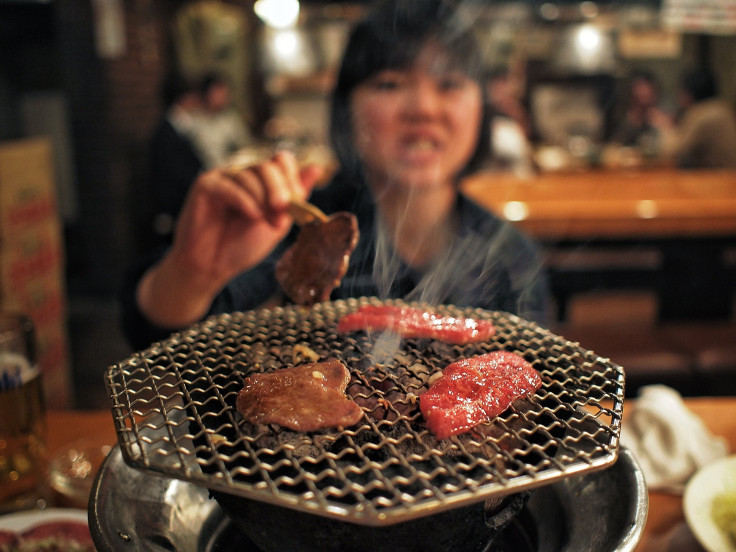Breathing Techniques For Eating: Slow, Steady Breaths Make Delicious Food Taste Even Better

Whether it’s your mother’s cooking, a high-end restaurant meal, or simply your favorite comfort food that’s sitting on the plate in front of you, there’s a good chance all you want to do is scarf it down. But before you do, you might want to practice patience and steady breathing instead. A team of engineers, researchers, and radiologists suggest slowing down breathing is the best way to get the most flavor out of food. And according to their new study, this is because the pace of a person’s breath can enhance how they perceive the food’s volatile compounds, which create their odors.
For the study, researchers wanted to see why breathing more slowly affected the way we smelled food. They knew that when someone practiced “quiet breathing,” there was something controlling how the particles were transported, but they weren’t exactly sure what it was. So they took CT scans of the human airway, from nostrils to trachea (the windpipe), and then produced a 3D-printed version. With this, they were able to see that the shape of the airway redirected volatile compounds away from the lungs and thus allowed them to be picked up in the nasal cavity.
They found that when you lean over a bowl of aromatic food and take a deep breath, the smells enter the body through the nose, then travel down to the back of the mouth, where the air flow forms a current that prevents the volatile compounds from escaping into the lungs. Then, while exhaling, the air holding the volatile compounds sweeps out of the cavity in the back of the mouth, and into the nasal cavity where olfactory cells sense and process them.
The smells are picked up along a thin sheet of mucus-coated sensory tissue. Containing millions of olfactory receptor cells, this tissue is capable of detecting and identifying thousands of different volatile compounds. The smells are detected upon arrival and generate an electrical signal that’s sent to the brain. The speed at which a person breathes then changes the way they absorb the smells. The slower the air exchange, the better the tissue is at perceiving volatile compounds. In turn, the brain has the opportunity to process more food smells, which prepares it to perceive the upcoming taste of the food.
“Smooth, relatively slow breathing maximizes delivery of the particles to the nose,” said the study’s co-author Rui Ni, an assistant professor of mechanical engineering at Penn State, in a statement. “Food smells and tastes better if you take your time.”
Anatomy experts had previously studied nasal passages but never examined how the pathway from the back of the mouth to the nose works. Knowing how the complex system of the nasal cavity works can inform the public about how to optimize their eating experience. Ni recommends diners practice slow, steady breathing when enjoying a high-quality meal in order to experience more smells, and ultimately more flavor.
Source: Shepherd GM, Ni R, Michalski MH, et al. Optimal directional volatile transport in retronasal olfaction. PNAS. 2015.



























